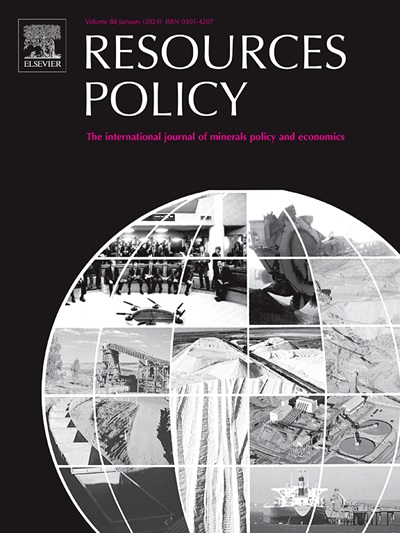释放自然资源、金融科技和财政政策的潜力,实现碳中和;来自 N-11 国家的证据
IF 10.2
2区 经济学
0 ENVIRONMENTAL STUDIES
引用次数: 0
摘要
通过控制自然环境中温室气体的数量,碳中和旨在减少气候变化的不利影响。在降低排放量的同时,还可以通过强制消除二氧化碳、促进金融科技发展、财政政策工具和资助人类发展来实现这一具体目标。当前的研究分析了人类发展指数(HDI)、自然资源(NR)、金融科技(FT)和财政政策(FP)在政策结构参数范围内对碳中和的影响。完成这项任务的目的是实现上述目标。为实现这一目标,正在进行的研究在 N-11 个国家的样本上应用了创新的 "基于矩量回归的一般方法(GMMQR)"和 "面板量值 ARDL "技术。研究结果表明,NR 和 FP 是降低碳中和的关键因素。另一方面,FT 和 HDI 则提高了碳中和程度。此外,根据 Dumitrescu 和 hurlin(2012 年)开发的异质面板因果检验,NR、FP、HDI 和 FT 被确定为与碳中和存在单向联系。根据这些发现,研究为所选国家制定了一项旨在实现可持续发展目标 13 的战略。这些国家的决策者需要关注鼓励有效利用自然资源的政策。此外,被选中的国家需要提高其金融科技水平,以应对环境退化并实现碳中和目标。本文章由计算机程序翻译,如有差异,请以英文原文为准。
Unlocking the potential of natural resources, fintech and fiscal policy for carbon neutrality; evidence from N-11 nations
By controlling the quantity of greenhouse gases in the natural environment, carbon neutrality is designed to reduce the adverse impacts of climate change. The specific goal can be attained by enforcing carbon dioxide elimination approaches, fostering the growth of fintech, fiscal policy tools, and funding in human development, along with the lowering of emissions. The current research analyzes the influence of the human development index (HDI), natural resources (NR), fintech (FT), and fiscal policy (FP) on carbon neutrality within the parameters of a policy structure. This task is performed with the objective of fulfilling the goals stated above. The ongoing research applies the innovative " General Method of Moment Quantile-based Regression (GMMQR)" and “Panel Quantile ARDL" techniques on a sample of N-11 nations to accomplish the goal. The outcomes support the idea that NR and FP function as pivotal factors in diminishing carbon neutrality. On the other hand, FT and HDI improve carbon neutrality. Moreover, in accordance with the heterogeneous panel causality test developed by Dumitrescu and hurlin (2012), NR, FP, HDI, and FT have been determined to have a unidirectional link with carbon neutrality. In regard to these findings, the research outlines a strategy designed to attain SDG 13 for the chosen nations. Decision-makers in these nations need to focus on policies that encourage the efficient use of natural resources. In addition, the chosen nations need to enhance their level of fintech to combat environmental degradation and achieve the targets of carbon neutrality.
求助全文
通过发布文献求助,成功后即可免费获取论文全文。
去求助
来源期刊

Resources Policy
ENVIRONMENTAL STUDIES-
CiteScore
13.40
自引率
23.50%
发文量
602
审稿时长
69 days
期刊介绍:
Resources Policy is an international journal focused on the economics and policy aspects of mineral and fossil fuel extraction, production, and utilization. It targets individuals in academia, government, and industry. The journal seeks original research submissions analyzing public policy, economics, social science, geography, and finance in the fields of mining, non-fuel minerals, energy minerals, fossil fuels, and metals. Mineral economics topics covered include mineral market analysis, price analysis, project evaluation, mining and sustainable development, mineral resource rents, resource curse, mineral wealth and corruption, mineral taxation and regulation, strategic minerals and their supply, and the impact of mineral development on local communities and indigenous populations. The journal specifically excludes papers with agriculture, forestry, or fisheries as their primary focus.
 求助内容:
求助内容: 应助结果提醒方式:
应助结果提醒方式:


